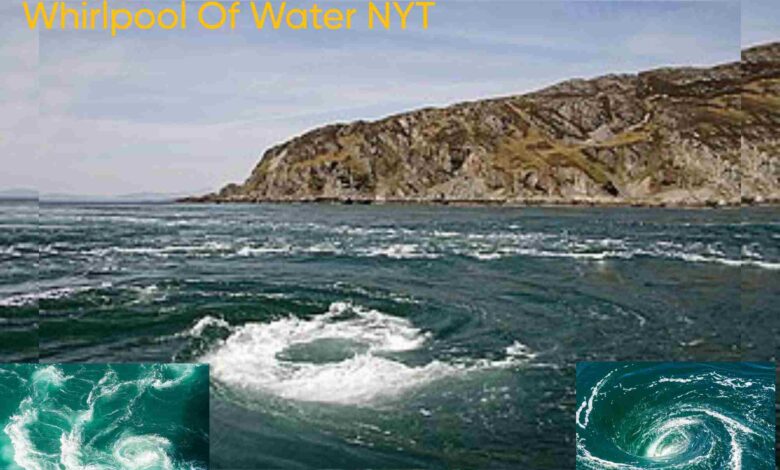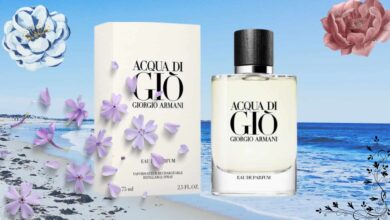Whirlpool of Water NYT: A Detailed Review

The idea behind “Whirlpool of Water NYT” is a reflection of both the natural beauty and the cyclical movement of water. It is an amazing occurrence that may be found in lakes, rivers, and seas and has long piqued people’s curiosity. The science of whirlpools, including their types, composition, cultural importance, environmental impact, and safety precautions, will all be covered in detail in this article.
What is Whirlpool?
A whirlpool is a circular stream of water formed by the joining of two opposite currents or the entry of a stream into still water. This cyclic movement creates a vortex that pulls the water inward, which often looks like a funnel. These whirlpools can range from small, riskless eddies to large, powerful shapes that can pose a threat to boats and arrows.
The Science of Whirlpool:
The formation of Whirlpools is a complex interaction between several factors. Here are some important factors:
Water currents: The collision of two opposite currents is a major cause of whirlpool formation. For example, when river currents intersect or the flow of water changes during a hurricane, it creates a cyclic motion.
Barriers: Natural barriers like rocks, islands, and low elevations can impede the flow of water. Water flowing around these obstructions may create eddies that grow into more substantial whirlpools.
Water’s depth and form: The whirlpool’s characteristics are also influenced by the water’s form and depth. Whirlpool intensity rises in constricted spaces due to increased water flow.
Wind and weather conditions: Strong winds can also play a role in whirlpool formation, especially in large aquatic bodies. Strong winds can combine with surface waves to produce whirlpool activity.
Types of Whirlpool:
Whirlpools come in a variety of sizes, strengths, and shapes. Here are some common types:
Eddies: These are small whirlpools found in rivers and streams. They are usually harmless, and their beauty creates interest in seeing.
Tidal Whirlpools: They occur in coastal areas where the currents of the islands are strong. These whirlpools can be visually impressive and can sometimes be dangerous.
Oceanic Whirlpools: These are large whirlpools that are powerful in seawater. Like the Gulf Stream, these can pose a threat to boats.
Maelstroms: These are especially dangerous whirlpools that are also popular in maths and stories. These are symbols of the powerful, uncontrollable water stream.
Cultural significance:
Whirlpools have had different meanings in different cultures at different stages of history. His interesting character appears in several legends, stories, and art.
Fictional stories: Whirlpools exist in different cultures:
Stories of Narsi: Northern stories mention a whirlpool called “Charybdis,” which is presented as a great, powerful force that can swallow boats.
Native American Myths: Stories from several Native American tribes depict whirlpools as a gate to spirits or a symbol of the other world.
Literature: Whirlpools are often mentioned in literature, where they become a symbol of life’s difficulties or emotional conflict.
Representation in the arts:
Whirlpools has attracted artists. Their dynamic movement and perception of light and shadow form the source of several creations in the arts. Artists have portrayed the beauty of whirlpools in their works, captivating the viewer.
The beauty of whirlpools in nature:
While whirlpools can be dangerous, they are also visually appealing. The patterns formed by the cyclic movement of water create a sense of wonder.
Natural wonders: Some places are famous for their wonderful examples of whirlpools:
Saltstraumen, Norway: It is one of the most powerful island currents in the world, producing amazing whirlpools that can be up to 10 meters wide.
Thames Narrows: In the UK, this area creates impressive whirlpools due to strong tide currents.
Marmore Falls, Italy: It is an artificial waterfall that produces whirlpools under it, which attracts tourists.
Photography and tourism:
The beauty of Whirlpools has become a popular theme for photographers and tourists. People go to places where whirlpools are to capture natural, beautiful scenery. Tour operators organize boat tours or expeditions to provide tourists with a closer experience of these picturesque circling waters.
Safety measures:
While whirlpools are interesting, they can also bring risks, especially for swimmers and boats. Understanding Whirlpool’s features is important for safety measures.
Assessing risks:
Strong stripes: whirlpools can create powerful currents that can easily sweep away swimmers. It is very important to take care of local conditions and understand the signs of danger.
Caution in boating: Boat operators should exercise caution in areas where whirlpools are common, especially during changes in mobility.
Swimming Guidelines: Avoid swimming in areas where whirlpools are present. It is important to follow the local water safety guidelines and take care of changes in conditions.
Scientific research and whirlpools:
Scientists study whirlpools to understand their formation and environmental impact. Research in this field gives us a better understanding of water systems and their processes.
Environmental impact:
Whirlpools can influence the distribution of nutrients in water and the movement of organisms. Their formation improves the mixing process in water, which is important for supporting various forms of aquatic life. What’s more, understanding whirlpool movements provides information about sand movement and erosion patterns.
Conclusion of whirlpool of water nyt:
The concept of “Whirlpool of Water NYT” reflects a fascinating natural phenomenon that attracts human interest and imagination. Their intricate formations, variety, cultural significance, and whirlpools rich in natural beauty reflect the power and simplicity of water.
As we face cyclical currents in our lives, whirlpools remind us to honour natural forces and appreciate their beauty. Understanding these dynamic systems encourages us to connect with our environment, and highlights the need to value the natural phenomena that shape our Earth. Whether they are seen as threats or spectacular phenomena, whirlpools teach us to protect our water resources and enjoy their beauty.
Please explore our site for more exciting content if you liked dis article.




